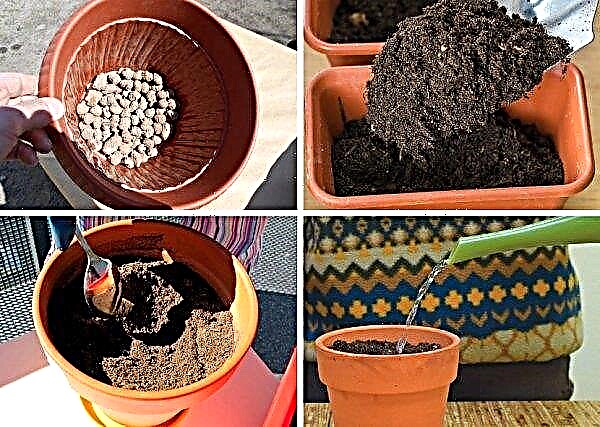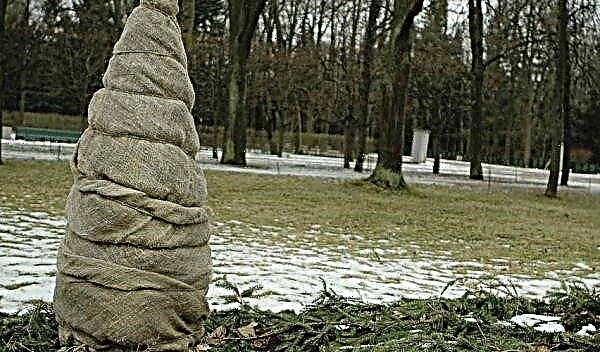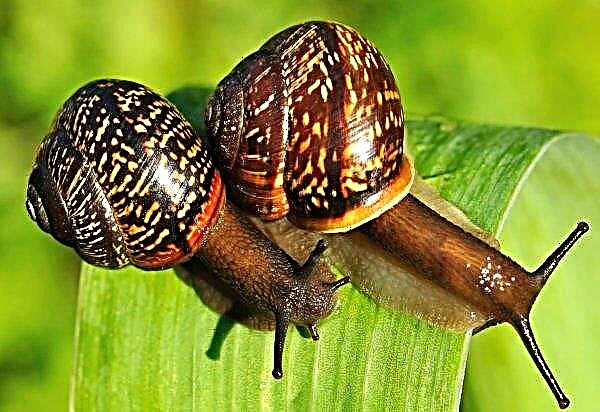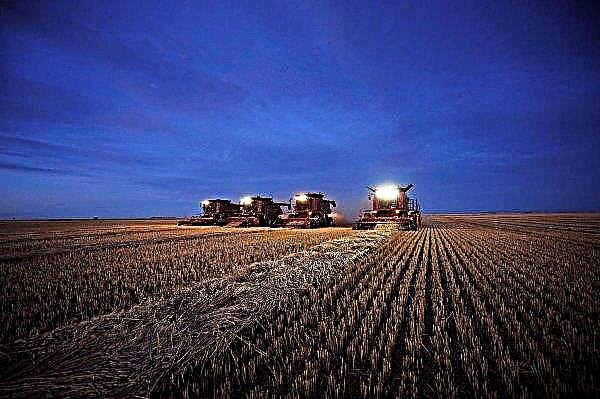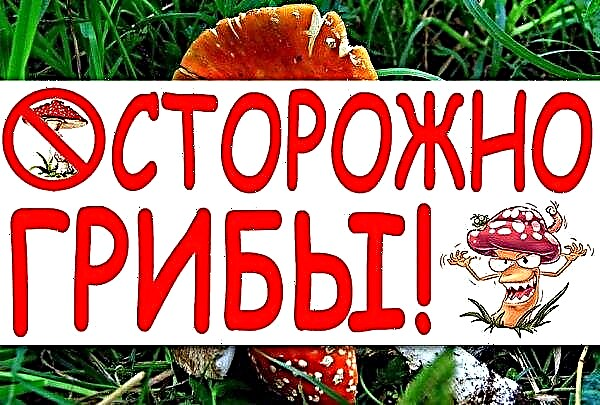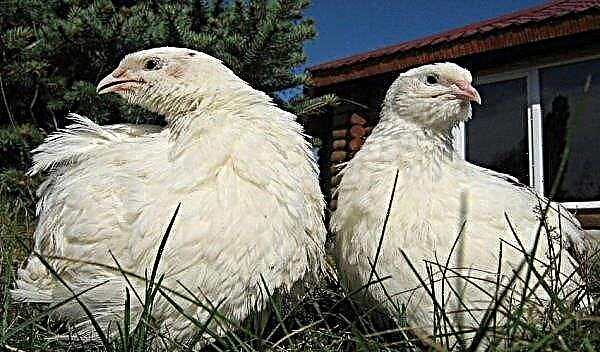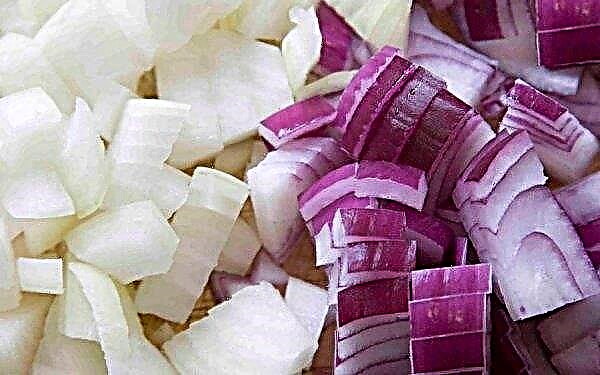Hydrangea is traditionally one of the most common garden ornamental shrubs. There are many reasons for this: it is beautiful, blooms for a long time, requires minimal care and is characterized by high winter hardiness, which allows it to be grown in the northern regions. One of the varieties of this species is Magical Mont Blanc (Magic Mont Blanc).
Grade description
Panicled Hydrangea The Magic Mont Blanc is an ornamental compact shrub up to 1.2 m high. The plant has strong shoots and foliage of the correct form of green color. Inflorescences are large and dense, pyramidal in shape with sharp tips. During the flowering period, which lasts from July to September, it is abundantly covered with large flowers, up to 2 cm in diameter, white at the bottom and green at the top.
Winter hardiness
The variety is quite winter-hardy, able to tolerate frosts down to -29 ° С. Thus, it can be grown in a temperate and harsh climate, characteristic of certain zones on the territory of Russia (Central part, Middle strip and more northern latitudes).
Did you know? The Latin name for hydrangea "hydrangea" is translated as «container filled with water». This name very accurately conveys the degree of moisture in the plant.
Landing and care
There are several ways to propagate hydrangea, the most popular of which is cuttings. It consists in the following: after performing sanitary pruning, shoots are not thrown away, but placed for 2-3 days in a growth stimulator (Kornevin, Epin, etc.).
Branches with 3–5 buds each are selected. Next, the cuttings are planted in the soil so that in the soil and in the air there are 2-3 buds. The seedlings are moistened and covered with a film, and with the appearance of the first leaves, the shelter is removed, the seedlings are obscured. In the third season, seedlings are transferred to a permanent place.
But you can go a shorter way - to buy seedlings in a store or a specialized nursery and plant already quite strong bushes. If you do this in the fall, in the summer you can already see the beautiful flowering of the Magic Mont Blanc.
Site selection and preparation
Magical Mont Blanc prefers neutral, acidic or slightly acidic fertile substrates. For better rooting, it is recommended to prepare alkaline calcium soil in advance. To do this is quite simple, but it is better to take the acidity to an acceptable level six months before planting. That is, if you plan to plant hydrangea in the spring, you need to perform the procedure in the autumn, and vice versa.
This can be done by adding various mineral and organic components:
- coniferous litter, peat, mullein or moss (1 bucket of substance per 1 m²) during the digging of the site;
- potassium sulfate or ammonium sulfate (2 tbsp. per 1 m²);
- citric acid (1 tbsp. per 1 m²);
- vinegar 9% (100 ml diluted in 1 bucket of water per 1 m²).

As for the other criteria that should be followed when choosing a landing place, it is desirable that they meet the following requirements:
- the place should be protected from the wind, especially from the north side;
- a good option is a small hill or a descent from it, preferably in a south or southeast direction;
- the minimum groundwater depth is 1.5 meters or more.
 After choosing a suitable place, the site must be dug up, carefully breaking all the clods, and remove stones that cannot be coped with.
After choosing a suitable place, the site must be dug up, carefully breaking all the clods, and remove stones that cannot be coped with.
Landing algorithm
Shortly before planting a plant in open ground, you should prepare a substrate of the following components:
- turf land - 30%;
- peat - 20%
- sand - 20%;
- humus - 30%.
 Combine the listed ingredients, add 40 g of superphosphate and 80 g of Nitroammofoski to each bucket of substrate. Mix everything thoroughly.
Combine the listed ingredients, add 40 g of superphosphate and 80 g of Nitroammofoski to each bucket of substrate. Mix everything thoroughly.
The following is a step-by-step description of the procedure:
- On the selected site, dig out landing holes, 40–45 cm deep and 30–35 cm wide. In the event that several seedlings are planted, holes are dug through each meter. If you will plant a hedge, you need to leave a distance of 75-80 cm.
- In the meantime, drainage should be prepared. Such materials are suitable for him: chipped brick, crushed stone, river sand, broken tile. You can mix these components in any combination.
- Place a drainage layer (15 cm) in each well, onto which the prepared substrate is laid (15–20 cm). It is better to do this procedure 2-3 days before the date of planting, so that the soil has time to settle.
- Place the seedling in the pit, straighten its root system, cover it with the rest of the soil mixture, periodically tamping it.
- Within a radius of 30–35 cm from the seedling, pour a shaft around the plant, 10–15 cm high. The space received inside will serve as a trunk circle.
- Pour each seedling (15–20 l) with warm water and mulch with needles or sawdust of the same breed (layer thickness - 8–10 cm).

Watering and fertilizer
After planting, hydrangea is watered abundantly and often, on average, twice a week in one bucket of water. The adult shrub is moisturized less often, but with a large volume - once a week for 25-30 liters. Such a volume of water is necessary for Mont Blanc, subject to normal rainfall.
Important! Mulch helps retain moisture and inhibits weed growth. You can prepare the composition of needles, spruce sawdust and peat. All components are suitable both for individual use and as part of a mixture (proportion to discretion).
In the case when there is a shortage of rain in spring and summer, they are watered in the same amount, but more often every 3-4 days. After watering, it is recommended to loosen the soil and remove weed grass. But you can do otherwise - to mulch the trunk circle.

In the following seasons, the bush is fed according to this scheme:
- Spring. In March or early April, complex mineral fertilizers are applied for perennials. You can use nitrogen nitrate or urea (2 tbsp. Per 1 m) and Nitroammofoskoy (3 tbsp. Per 1 m). Next year, instead of mineral nitrogen fertilizing, organics are used - cow dung or poultry litter. To do this, 500 g of excrement is stirred in 6 liters of water and insisted in a dark place until a characteristic odor appears, for about 1-1.5 weeks. A liter of the resulting infusion is dissolved in 10 liters of water and each plant is watered with such a volume.
- Summer. In late June or early July, phosphorus and potassium should be added. You can use potassium salt or potassium sulfate (30–35 g in each trunk circle), and the same amount of superphosphate. In addition, in the summer you should periodically spray the crown of a shrub from a spray with a solution of potassium permanganate.
- Fall. Around October, make 2 tbsp. "Nitroammofoski" on one bush.
 If you planted hydrangeas in accordance with the recommendations (made top dressing), in the first year the plant is not fertilized.
If you planted hydrangeas in accordance with the recommendations (made top dressing), in the first year the plant is not fertilized.
Starting in July, hydrangea is not fed with nitrogen, since this component contributes to a better growth of green mass. Young shoots that do not have time to get stronger before the onset of cold weather can suffer from frost.
Pruning
If you want the Magical Mont Blanc bush to retain its decorative qualities for as long as possible, you need to trim it regularly. This procedure is not vital for this variety and the bush can do without it. However, in this case, hydrangea will soon become sloppy and neglected. There are four main varieties of pruning - shaping, sanitary, stimulating and anti-aging.
In the early spring, before the buds begin to swell, as well as in the fall, they perform a sanitary procedure. Crown formation and growth stimulation are carried out in the spring, since in the fall this event gives impetus to the growth of shoots, and young shoots can succumb to freezing.
Important! Pruning should be done with a sharp disinfected pruner shears or scissors. All places of cuts must be covered with garden varieties, and after each shrub treat the tool with copper or iron sulfate.
In the event that Magic Mont Blanc was planted in the autumn, the first sanitary haircut can already be carried out in the first spring. To do this, cut off all frozen, dry and diseased shoots. Frosted branches are removed to healthy wood. Last year's shoots are cut to a third of the length to stimulate growth. In order to complete the forming pruning and not harm the plant, you need to remember a few rules:
In order to complete the forming pruning and not harm the plant, you need to remember a few rules:
- In the first season, the plant is not pruned; it is allowed to grow stronger and take root.
- In March, next year, all the shoots of last season are cut to the ground. This must be done to strengthen the skeleton of hydrangea. Exactly one year later, the procedure is repeated in the same way, leaving longer parts of the cut branches, each of which should have 2-3 healthy buds.
- The branches, whose growth is directed inward, are removed, regardless of whether there are kidneys on them. This must be done to reduce the density of the crown. Excessive thickening contributes to high humidity, which, in turn, is favorable for the development of fungi.
 In the future, during the autumn sanitary pruning, the inflorescences of the current growing season are removed. If they are not cut, the mass of snow adhering to them can cause damage to the hydrangea branches. After 6-7 years of life, you can conduct a rejuvenating procedure.
In the future, during the autumn sanitary pruning, the inflorescences of the current growing season are removed. If they are not cut, the mass of snow adhering to them can cause damage to the hydrangea branches. After 6-7 years of life, you can conduct a rejuvenating procedure.Do this as follows:
- Cut off all the old branches that interfere with the growth of young shoots.
- The entire shoot, over 4-5 years old, is removed to the base so that as a result 7-8 of the strongest and most healthy branches remain on one plant.

Winter preparations
Magical Mont Blanc tolerates frosts typical of most regions of Russia. Adult plants do not need shelter for the winter in most cases. Simply change the mulch by laying a fresh layer 10–12 cm thick.
As for young seedlings, they still require warming in the first couple of years of life. In regions with severe frosts or snowless winters, the plant is covered with pine branches, on top - a spunbond-type canvas. If in your area the frosts are not too severe, the spruce branches are enough, but it needs to be fixed, for example, tied with a plait. 1- tilted shoots, 2 -cocking, 3- spruce branches, 4- lutrasil, 5- stone
1- tilted shoots, 2 -cocking, 3- spruce branches, 4- lutrasil, 5- stone
Diseases and Pests
The Magic Mont Blanc has a fairly strong immunity, resistance to diseases and pests. In order to protect hydrangea from troubles, it is enough to follow some simple recommendations:
- regular feeding at the appropriate time. This measure helps to increase the immunity of the plant, and therefore, prevent the development of diseases;
- timely and proper hydration (shrubs should not be poured, but soil should not be allowed to dry out);
- regular sanitary pruning (severe thickening of the crown can lead to fungal diseases and pests).

However, compliance with preventive standards is not always a guarantee against the development of possible diseases. If you nevertheless found such alarming signs on hydrangea as white, black or rusty deposits, cracks in the cortex (especially near the root neck), signs of rot, then, most likely, the bush is affected by some kind of fungal disease.
In this case, use any of the listed fungicides:
- Bordeaux liquid;
- Home
- "Topaz";
- "Speed";
- Fitosporin-B.

These products are used in accordance with the manufacturer's instructions. Often in such manuals it is indicated that you need to process not only the bush affected by the disease, but also all plants nearby, as well as the soil.
Did you know? Most varieties of hydrangea love acidic alumina, from which the plant is able to absorb aluminum. This element gives the shrub flowers various red and blue shades.
As for pests, the aphids, spider mites, leaf moths, etc. pose the greatest threat. In order to prevent insect infestation, it is advisable to carry out spring treatment of hydrangea with insecticides, for example, the following:
- "Actellicus";
- "Spark";
- Fitoverm;
- a solution of ash, ammonia or soda in water with laundry soap.
 Sometimes you need to repeat the procedure after 15-20 days after the first application. Usually, spring treatment with drugs is performed before the sap flow begins.
Sometimes you need to repeat the procedure after 15-20 days after the first application. Usually, spring treatment with drugs is performed before the sap flow begins.
Variety in landscape design
Due to its remarkable external data, the Magic Mont Blanc has found wide application in landscape design. The classic white color and the beautiful shape of the brushes allow you to use it in any compositions and combinations.
Having a universal size, with the help of a bush you can arrange:
- alpine slides;
- heather or Japanese garden;
- borders and retaining walls;
- hedge;
- planting in a flowerpot (in summer it can be grown in the garden, and brought into the house for the winter).

Being an excellent tapeworm, the variety also looks great in combination with lilac, incense, with plants of red hues, with many flowers of various bright colors. For growing in a group surrounding a taller tree, Mont Blanc is especially good in combination with conifers of any shades and sizes (spruce, pine, arborvitae, cypress, fir, etc.).
The Magic Mont Blanc is an excellent solution for the implementation of various ideas for landscaping a personal plot. Hydrangea can not be called too original and unusual plant, but its strengths are different. It has a traditional classic beauty, has a long flowering period, requires a minimum of care and tolerates frosts.



